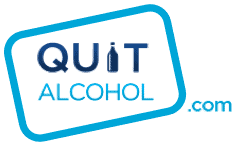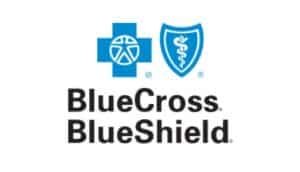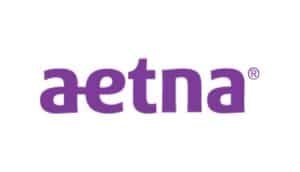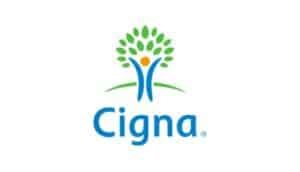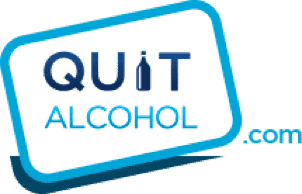 Getting treatment for addiction is something that a lot of people, even those who recognize they have serious problems, can be reluctant to do. Cultural misconceptions can make it challenging, and some people also see it as an admission of failure or guilt. Going into rehab to get better is a choice, and it’s one you should come to with some serious reflection on who you are and where your life is. Let’s take a look at some of the more pernicious treatment center myths that make it hard to start the recovery process.
Getting treatment for addiction is something that a lot of people, even those who recognize they have serious problems, can be reluctant to do. Cultural misconceptions can make it challenging, and some people also see it as an admission of failure or guilt. Going into rehab to get better is a choice, and it’s one you should come to with some serious reflection on who you are and where your life is. Let’s take a look at some of the more pernicious treatment center myths that make it hard to start the recovery process.
Myth #1: You Need to Hit Rock Bottom Before You Can Enter Rehab
There’s a pervasive mentality about rehab that you can’t really engage with it until you’ve hit what’s culturally stereotyped as “rock bottom.” This is a euphemism for getting to the point where your life is such an utter wreck that your options are basically death or recovery. Rock bottom entails at least a few of the following things:
• Ending up homeless
• Being completely broke
• Family members disowning you
• Friends refusing to help you out
The mythos of hitting rock bottom is pervasive because it is perpetuated as part of a standard character arc that’s used in books, films, and TV shows. Having friends and family members around is extremely beneficial to the recovery process. One of the main reasons that major emphasis is placed on group therapy sessions for people with substance use disorders is to ensure that individuals can get peer support while they go through the process. One study showed that care that persisted for three to nine months during the rehab process achieved significantly greater improvements in baseline health for patients versus a partial program.
Further study of the same group showed that individuals with alcohol and marital problems had achieved better outcomes after 30 months when they had access to continuing care. In fact, these study members were found to be abstinent from alcohol 94 percent of days measured versus 82 percent in the control group. That might not sound massive, but it’s a big deal for the people who are not experiencing trouble those extra 12 percent of days.
Myth #2: Nothing but Quitting Cold Turkey Works
In a few very specific cases, quitting cold turkey can lead to withdrawal symptoms that are so severe they can lead to death. Quitting alcohol, in particular, can lead to withdrawal issues that give rise to cardiac and respiratory episodes that result in death. People trying to quit alcohol can also experience:
• Visual and auditory hallucinations
• Anxiety
• Retching
• Nausea
That sounds like a lot to take on in one shot. For people who have formed chemical dependencies, quitting alcohol may require going into a structured program where medical professional weans them off it. A wide range of drugs are used to cope with these withdrawal symptoms, including:
• Antipsychotics
• Anti-convulsants
• Mood regulators
While alcohol is easily the most dangerous substance in terms of potentially lethal withdrawal symptoms, other drugs can be brutal to ride out cold turkey, too. People undergoing cocaine withdrawal, for example, experience symptoms within 90 minutes of getting a fix. These symptoms can last for 10 days, and they include massive changes in appetite, mental clarity, sex drive, and general mood. Worse, there is no one specific drug that works well for all people in coping with cocaine withdrawal concerns. Doctors have to try a variety of treatments until they find a good choice for each individual patient.
A host of drugs are also used to wean people off opiates and opioids. These include:
• Buprenorphine
• Methadone
• Naloxone
In some cases, antidepressants may also be prescribed.
Myth #3: Treatment Is for Celebrities
So many treatment center myths have some basis in Hollywood that you have to wonder how an industry so equated with drug use disorders can possibly get the subject of rehab so wrong in media portrayals. In many instances, it’s because recovery is a punchline in a comedy, or it’s the source of drama on a reality show. This attitude also makes it sound like a way that celebs get around bad press or the threat of criminal charges. While it’s easy to joke about someone like Charlie Sheen, it also begs questions about how so many people could know one man’s life was off the rails, and yet no one cared enough to help.
People in the medical field have been aghast at the perceptions that come from rehab TV for years. All too often, we’re presented with a slew of treatment center myths in an episode of something like the “Dr. Phil Show” or “28 Days,” including things like:
• Tough love
• Sudden breakthroughs
• Touching family moments
• Personal breakdowns
• Shouting matches
The reality TV view of these things is not seen by any practitioner as healthy. The recovery process takes time. Getting treatment is an important first step, for sure, but there also can be complications from the tough-love attitude.
In particular, the sense that someone with a substance use disorder was coerced into getting treatment can lead to an adverse relationship with counselors and relapses. Surprisingly, patients in one study who admitted voluntarily often expressed just as a strong feeling of being coerced as those who were involuntarily remanded to rehab centers. This suggests that we’re often going about the initial process of getting people into care the wrong way, pushing friends and family members to get help rather than just letting them know they have support available.
Doing It Yourself Is Best
Kicking a drug or alcohol habit, as mentioned in the section about quitting cold turkey, is a potentially fatal undertaking, especially if withdrawal symptoms are handled carelessly or without the proper resources. Trying to address problems yourself may also be a sign of a high-functioning addiction issue. Many people with substance use disorders, especially among the educated and the wealthy, are quick to hide their troubles and insist that they don’t need help.
It’s critical to understand that support is essential. Even if you have caring friends and family members there to provide support, seconds can be of the essence if, for example, a heroin user crashes and needs access to a drug like Naloxone. Do you really want to be waiting for the EMTs to arrive when the alternative is having a registered nurse just down the hallways in an inpatient setting?
Myth #4: Rehab Is for Junkies
One of the greatest hurdles for people in getting treatment is moving past judgments that are attached to drug use, withdrawal and recovery. Someone may decide that their abuse of Adderall, for example, was about keeping their grades up and not getting high. By extension, they arrive at the conclusion that keeping up in school isn’t something a junkie would do, so it’s not possible that they can have a problem. Similar issues can occur with doctors, who often presume that their professional status excludes the possibility they could be addicted to a controlled substance.
The reality, though, is that is not how chemical dependency works. Not everyone who does drugs looks like Bubs from “The Wire.” People can get hooked on opiates because they went in for dental surgery and needed strong painkillers. Weekend partiers rewarding themselves for putting in a tough week of work can find themselves addicted to substances like ecstasy and cocaine. A truck driver may end up using meth just to get through the last leg of a long trip.
Addiction is a problem that has been with humanity for thousands of years. It’s wise to not assume that the classic “junkie” look tells the story of someone with a drug problem. High-functioning addicts can be clever in hiding their issues from others and even themselves. Subtle hints are often more telling, such as:
• Seeing a change in weight
• Suddenly gaining new friends or losing old ones
• Finding ways to be isolated, such as taking bathroom breaks at work
• Declining sleep
It’s often necessary for people with different sections of the puzzle to ask questions and compare notes when they’re worried about loved ones and addiction. A parent might notice something with their child who has come home from college, and it may take a call to their roommate to learn what the missing piece is. There aren’t always obvious signs when someone is misusing drugs.
Myth #5: Rehab Is Costly
Yes, there are some intentionally high-end inpatient recovery centers that are pricey. Dr. Phil probably has sent a few guests to them. That, however, is far from the entire story.
Recent health care reforms have made it more likely that your insurance provider will cover some or all of the costs of rehab. If you don’t have insurance, a payment plan can be set up. Many states that were hit hard by the opioid epidemic are also beginning to offer Medicaid help for those who voluntarily enter treatment. There are many nonprofit groups that try to connect potential clients with treatment centers.
The image of rehab as exclusively an intensive inpatient process also creates trouble. Many patients can go to recovery program sessions during the daytime and be back in their beds at home at night. Taking the cost of an inpatient bed out of the equation often saves money, but you shouldn’t choose to go that route simply to cut costs. Instead, you need to act on the best advice of a qualified professional in choosing the arrangement that works for you.
Myth #6: Recovery Is a Cure-All
No one goes into recovery and comes out “cured.” Addiction isn’t like cancer; it’s something that you’ll deal with your entire life, and the goal of the rehab process is to ensure that you’ll be as fully equipped as possible to respond to a bad situation. The most that a medical professional can do is see that a patient is fully detoxified before they step back out into the world.
